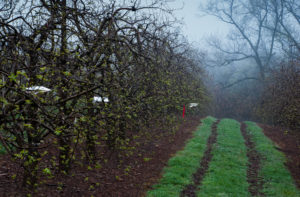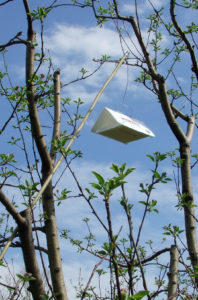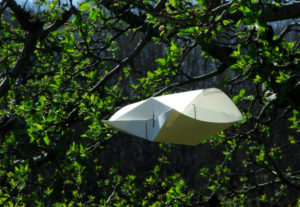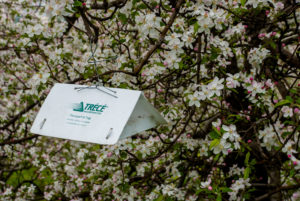WNC Orchard Insect Pest Populations – March 31, 2020
go.ncsu.edu/readext?668457
en Español / em Português
El inglés es el idioma de control de esta página. En la medida en que haya algún conflicto entre la traducción al inglés y la traducción, el inglés prevalece.
Al hacer clic en el enlace de traducción se activa un servicio de traducción gratuito para convertir la página al español. Al igual que con cualquier traducción por Internet, la conversión no es sensible al contexto y puede que no traduzca el texto en su significado original. NC State Extension no garantiza la exactitud del texto traducido. Por favor, tenga en cuenta que algunas aplicaciones y/o servicios pueden no funcionar como se espera cuando se traducen.
Português
Inglês é o idioma de controle desta página. Na medida que haja algum conflito entre o texto original em Inglês e a tradução, o Inglês prevalece.
Ao clicar no link de tradução, um serviço gratuito de tradução será ativado para converter a página para o Português. Como em qualquer tradução pela internet, a conversão não é sensivel ao contexto e pode não ocorrer a tradução para o significado orginal. O serviço de Extensão da Carolina do Norte (NC State Extension) não garante a exatidão do texto traduzido. Por favor, observe que algumas funções ou serviços podem não funcionar como esperado após a tradução.
English
English is the controlling language of this page. To the extent there is any conflict between the English text and the translation, English controls.
Clicking on the translation link activates a free translation service to convert the page to Spanish. As with any Internet translation, the conversion is not context-sensitive and may not translate the text to its original meaning. NC State Extension does not guarantee the accuracy of the translated text. Please note that some applications and/or services may not function as expected when translated.
Collapse ▲ Coronavirus Impact on Apple Pest Recommendations
Coronavirus Impact on Apple Pest Recommendations
The coronavirus situation has sidelined our field activities for the timing being, so we are unable to monitor and assess pest activity in the region as we normally do. We are hopeful that we will be able to begin some field activities in the near future. Meanwhile, we do have several insect development models that are quite accurate for the timing of critical insecticide applications. What we are not able to do during this period is estimate pest density. Hence, website recommendations for the near future will be based on model predictions more so than actually captures in the field. Again, we are hopeful that can begin some field activities soon.
Now is the Time to Complete Installing Mating Disruption and Setting Pheromone Traps
By now most growers have completed their prebloom insecticide applications and are entering bloom. As we proceed through bloom, the most important objective is to avoid pesticide applications that are toxic to bees. With the possible exception of fruitworms that appear towards the end of bloom, there is no reason for insecticide applications until petal fall.
Mating Disruption: For those using mating disruption for codling moth and oriental fruit moth (OFM), now is a good time to complete deploying dispensers. Ideally dispensers should be hung before codling moth biofix, which generally coincides with full bloom of ‘Delicious’ apples; in orchards with very low codling moth populations (i.e., where mating disruption has been used in previous years) biofix often occurs later. Also, hand-applied dispensers are much easier to deploy before trees are in full bloom or when they begin to leaf out.
OFM flight is well underway in lower elevations in the piedmont and foothill areas, and OFM are beginning to emerge in higher elevations such as Henderson County (2100 ft). Deployment of mating disruption dispensers before OFM biofix is less critical than for codling moth, because the first generation can be easily controlled with a single insecticide application at petal fall of apples (closer to shuck split or slightly later in peaches). Insecticide choices at petal fall will be covered in future posts.
Pheromone Traps: Now is also a good time to hang pheromone traps for codling moth, and OFM if they have not yet been deployed. Both wing and Delta style traps are appropriate for codling moth and OFM, but it is our experience that Delta traps are much easier to service. Also, it is recommended that traps be placed in the upper third of the tree canopy if possible, because this is where flight activity is most common. Finally, use of the same pheromone lure we have used in our research is important if our recommendations are to be relevant to your trap captures. OFM and codling moth lures we have used in our research have been Trécé brand OFM L2 and CM L2, with the L2 indicating they are long-life lures. L2 lures are loaded with a higher dose of pheromone compared to standard lures, and only need to be changed at 12-week intervals, compared to 4-wk intervals for standard lures.
Ambrosia Beetle Survey – Your Participation is Needed
A group of scientists in the Eastern US who are collaborating on ambrosia beetle research (including the NC Apple Team) are conducting a survey to better understand the severity of ambrosia beetles on both a spatial and economic scale. The survey is coordinated by the University of Georgia, and is being sent to producers of ornamentals, apples, peaches, and pecans. The results of the survey will be used to help set research and extension priorities, and in grant proposals to document the importance of ambrosia beetles to stakeholders.
The survey will only take 5 to 7 minutes, so please participate and Help your Apple Team Help You!
Follow the link below to take the survey:
Learn more about southeastern apple insect pests at the Apple Insect Management page.
2020 Average Weekly Trap Captures
| HENDERSON COUNTY | |||
| Insects per trap | |||
| Mar 11 |
Mar 17 |
Mar 31 |
|
| Codling Moth | – | – | – |
| Oriental Fruit Moth | 0.0 | 0.0 | 7.5 |
| Tufted Apple Bud Moth | – | – | – |
| Redbanded Leafroller | 3.0 | 7.0 | 4.0 |
| Obliquebanded Leafroller | – | – | – |
| Lesser Appleworm | – | – | – |
| Apple Maggot (abandoned and research) | – | – | – |
| Brown Marmorated Stink Bug (commercial – mountains) | – | – | – |
| Brown Marmorated Stink Bug (commercial – upper Piedmont) | – | – | – |
| Brown Marmorated Stink Bug (research – unsprayed) | – | – | set |
| Spotted Tentiform Leafminer | 0.0 | 0.0 | 0.0 |
| Dogwood Borer | – | – | – |
| Peachtree Borer | – | – | – |
| Lesser Peachtree Borer | – | – | – |
| San Jose Scale | – | – | – |
*Note that these averages illustrate only the timing of insect emergence and fluctuations in populations, and are not representative of population levels in any given orchard. The only way to have an accurate assessment of an individual orchard’s populations is to set up traps in that orchard.
2020 Accumulated Degree Days
| Henderson County | ||||
| Biofix | – | – | – |
|
| Codling Moth | – | – | – | – |
| Oriental Fruit Moth | – | – | – | – |
| Tufted Apple Bud Moth | – | – | – | – |





